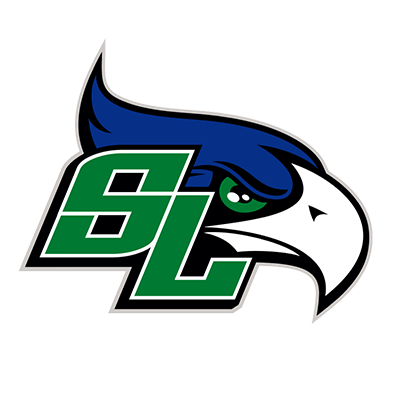Making a Masterpiece: South Lakes Students “Find Their Language” in Inclusive Fine Arts Class
It’s just after 8 a.m. on a Friday at South Lakes High School, and Matt Ravenstahl’s art classroom is buzzing with creative energy. At one table, a student is tying brightly colored pieces of yarn onto a wire grid. Another student is painting small clay sculptures molded in plastic cups. Across the room, students are working in their sketchbooks, drawing anime characters and a lifelike cityscape. Set to light background music from a Bluetooth speaker, the classroom is a calming place to start the day. It’s the perfect setting for a unique and inspiring class: Inclusive Fine Arts.
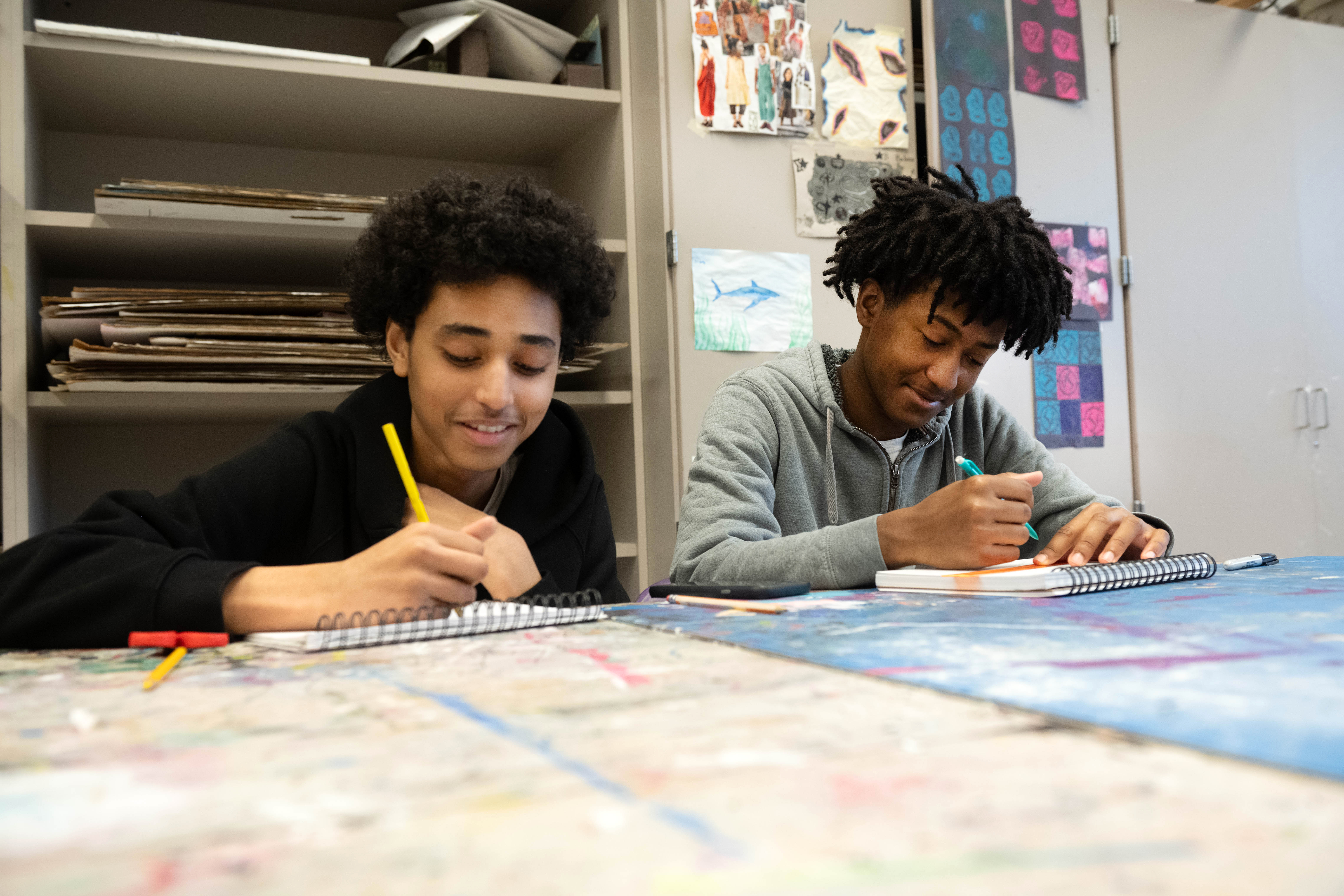
In its first year, the class features a mixture of students with intellectual disabilities (ID) and neurotypical students. Ravenstahl says it stemmed from a desire to accommodate many students with intellectual disabilities in the art department.
“We just kept asking over the years, ‘Is there a way we could work with the students more effectively?’ and so last year the school leaders came to us and said, ‘What would you think about doing a co-taught class with a smaller student population?’”
In the Inclusive Fine Arts class, students are encouraged to make whatever they desire, with their choice of medium, whether it’s paint, pencils, markers, or clay. That’s important, says Ravenstahl, who encourages students to “find their language” in art.
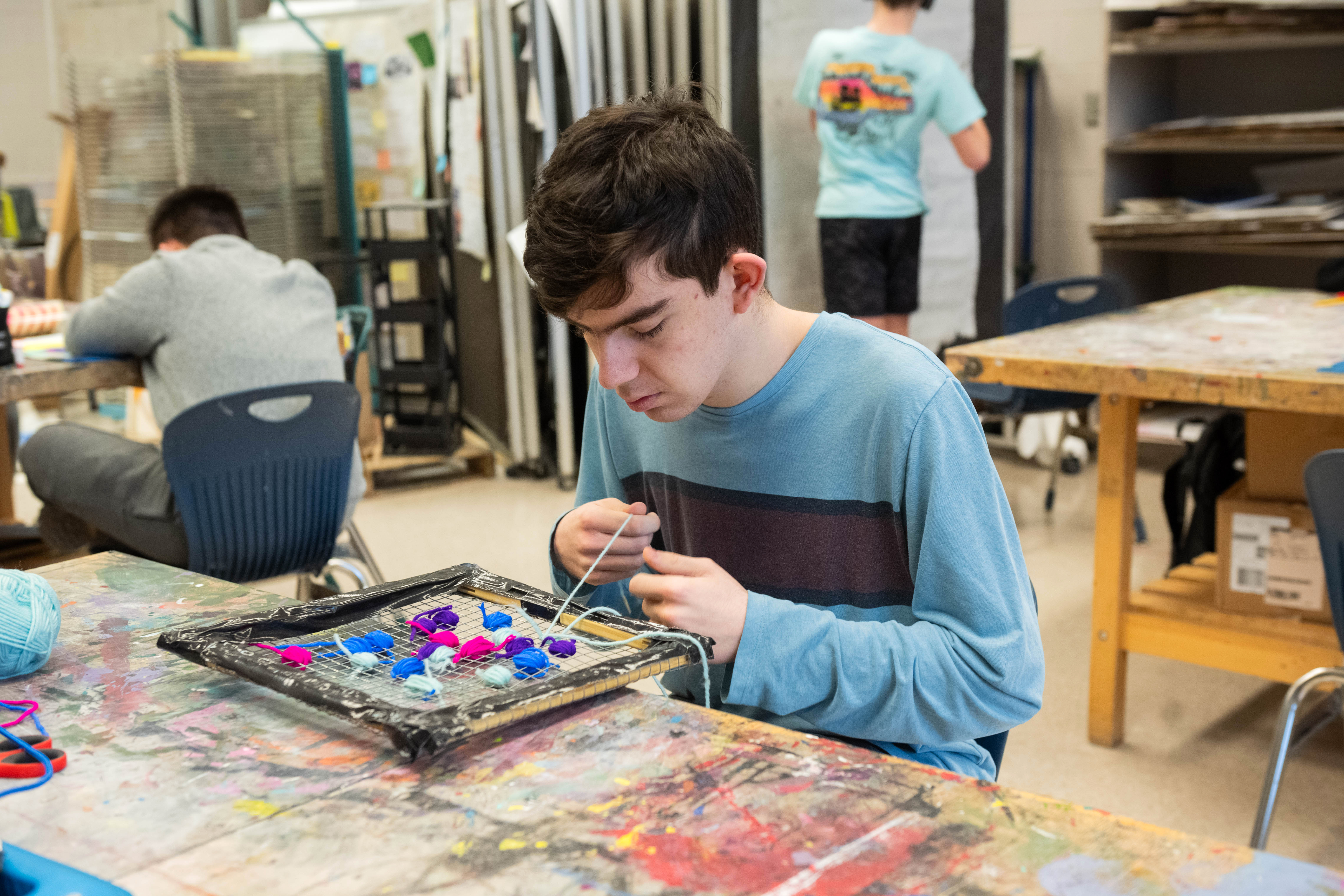
“That's the very intensive part, [becoming] intimately familiar with the student and their work and what they're thinking about,” he said. “I'll sit with them and show them artwork, and usually what I'll say is, ‘Can you see why I would show you this artist?’ and they'll start picking out things, like, ‘Well, I tend to do that,’ and then I'll ask them, ‘What do you do differently?’ And they'll start to understand their niche in art making.”
Co-teacher Claudia Harvey plays a vital role in helping students find their niche. She gives every student access to the artistic process of their choosing. Harvey adapts media and materials so students can manipulate them on their own. Ravenstahl says that without her, some projects wouldn’t get made.
“I enjoy the fact the students are making choices about their work,” said Harvey. “ID students often experience art with very formulaic lessons that limit their ability to express themselves. Working with Dr. Ravenstahl is always nice; he is very creative and plays good music in class. We also both see the value in a relaxed atmosphere. We are a good team.”
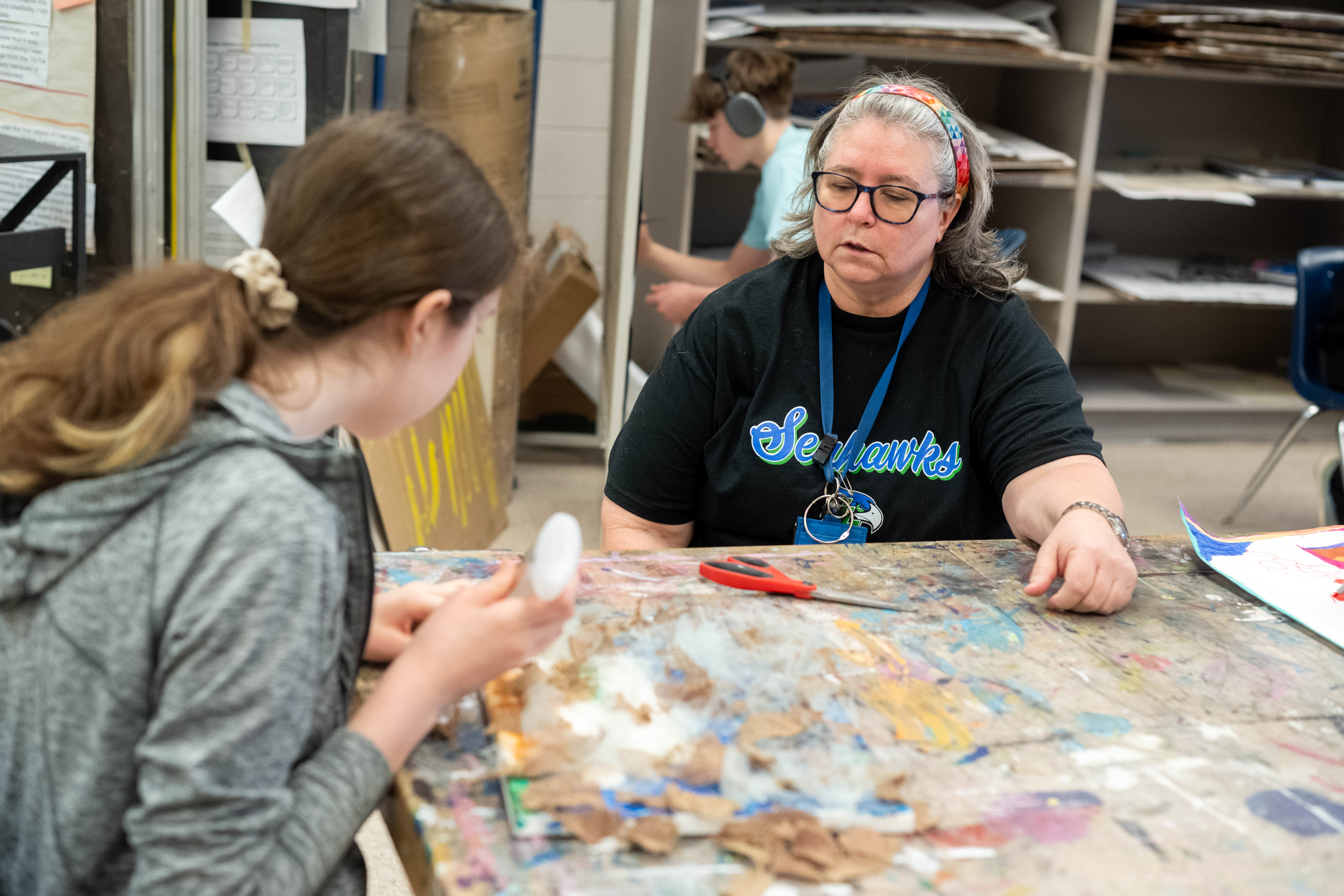
Ravenstahl says he has noticed a change in his students once they find their language. He described one student who used to feel sleepy in class and now comes in every day excited to work. “I think we found a process that he likes,” Ravenstahl remarked.
Many of the students enjoy showing off their masterpieces. One student, Frank Hickok, excitedly points at the colors on his drawing, a patchwork pattern of marker ink on a large piece of paper. With a grin on his face, Frank taps each color on the tablet he uses to help him communicate: “Red. Yellow. Black. Pink.”
Another student, Nora Patterson, is gluing pieces of burlap and other textured fabrics onto a canvas.
“I do a lot on canvas. I paint, I draw,” she said. Nora added she especially likes working with the different fabrics because of “how they feel.”
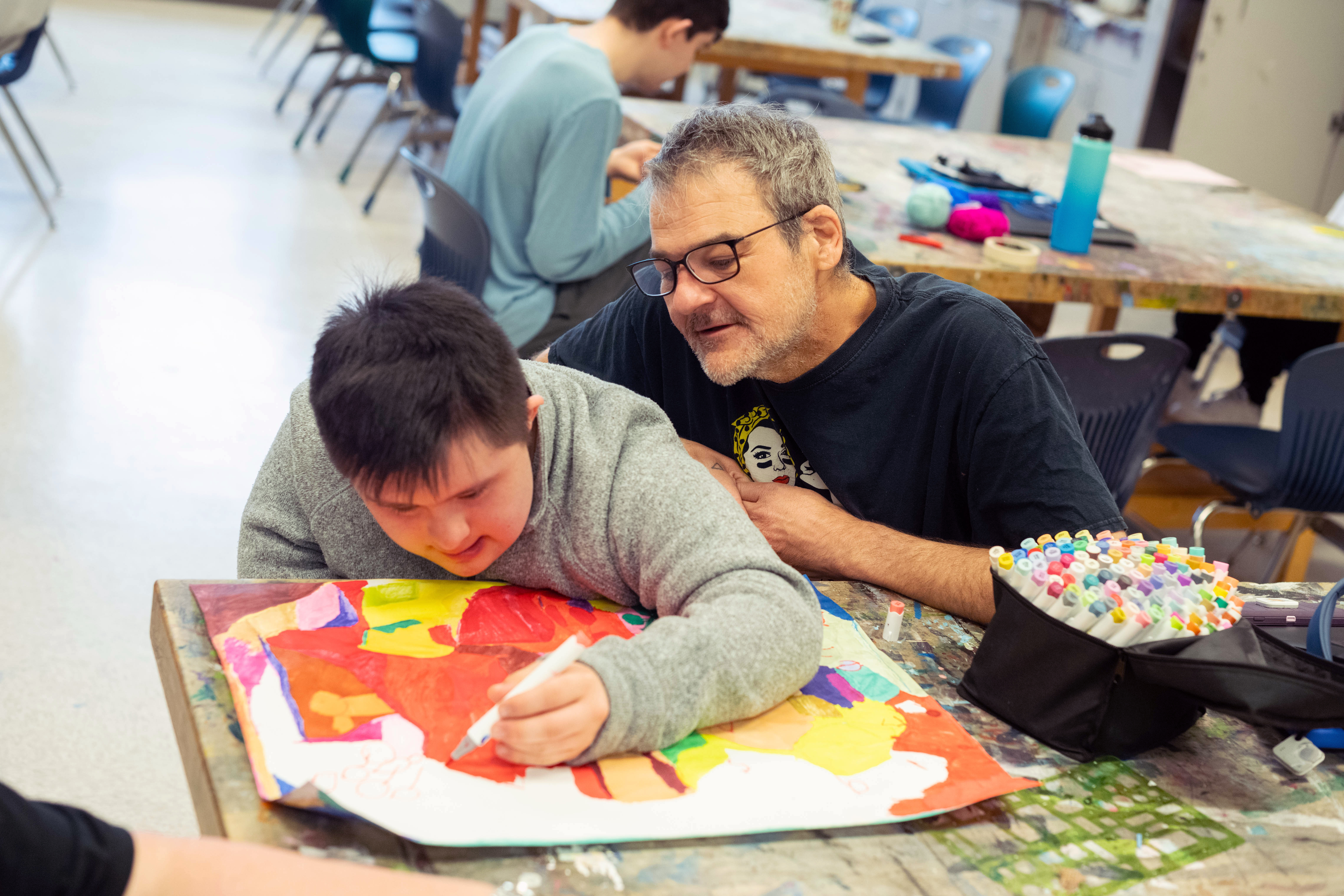
Ravenstahl, meanwhile, is looking at one of his student’s sketches and giving positive feedback. “You’re getting better all the time, man!” he remarks. “You’re getting more and more confident!”
Positive feedback is a pillar of the Inclusive Fine Arts class. Everyone in the class supports one another, providing constructive criticism of each other’s work.
“It's just a positive environment,” explained Ravenstahl. “The kids just come in; they want to try something and don't segregate. They just treat each other like people, and I think that's fantastic.”
The Inclusive Fine Arts class is one of many ways Fairfax County Public Schools applies its 2023-30 Strategic Plan goals in the classroom. This class supports Goal 2: ensuring every FCPS student feels safe, supported, and empowered.
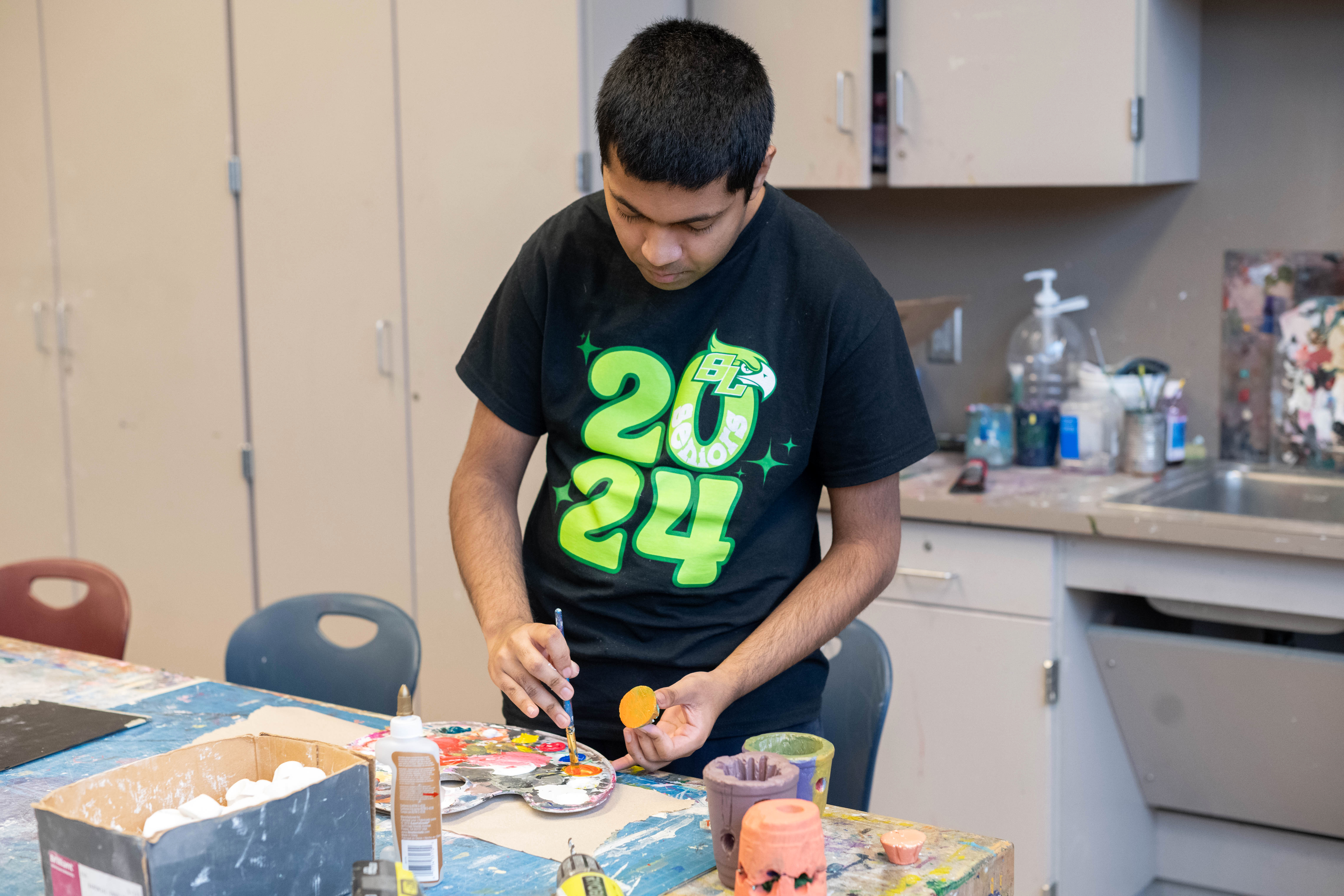
Students in the class also feel uplifted when teachers feature their art in local art shows. The next one will happen in Arlington in April. For some students, this experience is life-changing. Ravenstahl says it can be a student’s first step toward pursuing a career in art or art education.
“I’ve had former students email me and say this was the one class that I learned things that mattered in life,” he said, “which means a lot.”
At a back table, Samira Kalay, a freshman at South Lakes, is starting work on her next piece. She carefully repairs a hole in the canvas and describes her next steps. “I’m going to paint the canvas white and then sketch it out,” she says. “I’m just gonna see where it goes.”
Ravenstahl walks between the work tables, an easy smile on his face. “I love starting my day with this class. It’s so nice,” he says.

